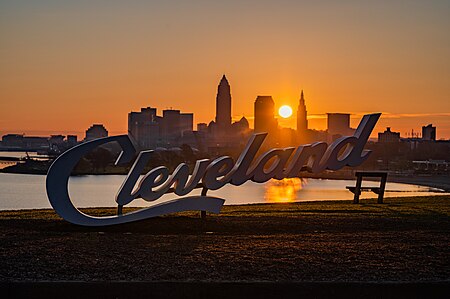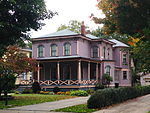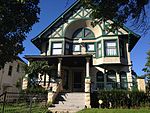Edgewater, Cleveland

Edgewater is a neighborhood on the West Side of Cleveland, Ohio. Located along the Lake Erie shoreline, it is situated approximately five miles west of downtown Cleveland. It extends east-to-west from the neighborhood of Detroit-Shoreway to the streetcar suburb of Lakewood and north-to-south from Lake Erie to the neighborhood of Cudell. Edgewater is known for its Lake Erie frontage, tree-lined streets, and extensive Edgewater Park, part of the Lakefront Reservation of the Cleveland Metroparks. It also includes the Clifton Boulevard Historic District retail area. The neighborhood was part of the Village of West Cleveland from 1871 until its annexation to Cleveland in 1894. Some light industry is located along the rail line on its southern border, separating it from Cudell.
Excerpt from the Wikipedia article Edgewater, Cleveland (License: CC BY-SA 3.0, Authors, Images).Edgewater, Cleveland
Saratoga Avenue, Cleveland
Geographical coordinates (GPS) Address Nearby Places Show on map
Geographical coordinates (GPS)
| Latitude | Longitude |
|---|---|
| N 41.431559 ° | E -81.702332 ° |
Address
Saratoga Avenue 2883
44109 Cleveland
Ohio, United States
Open on Google Maps









